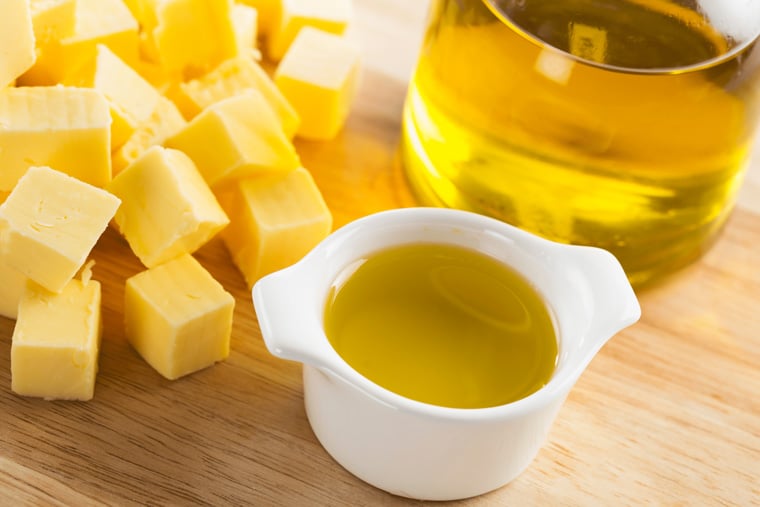
19 Oct Role of fats in breadmaking
When a recipe calls for butter, can you use shortening? What about margarine? Or lard? Is one better than the other? Alas, not all fats are created equally for breadmaking. As the baker, you get to choose the fats in breads to achieve the desired taste and texture, at the right cost.
What are the types of fats for bread?
There are many different types of fats used in bakery products. They can be categorized into liquid fats or solid fats. Liquid fats refer to all the oils, such as canola oil, vegetable oil, or olive oil and are liquid at room temperature. On the other hand, solid fats, as the name suggests, are fats that are solid at room temperature, such as butter and lard.
Fats differ in composition. Some fats are truly 100% fats while others contain water and emulsifier. Both butter and margarine are emulsified fats made up of approximately 80% fats and 20% water.
It makes a difference which fat is used in the recipe and there is no easy one to one substitution. Nevertheless, all fats, whether solid or liquid, provide flavour and richness. Fats are important especially when you’re looking to bake rich, tender breads.
What does fats do in bread?
Adds richness and flavour
Breads that contain a lot of fats will give a more luxurious mouthfeel due to their lower melting point, also known as the slip point. What’s more, fats improve flavour by adding their own distinctive notes.
Tenderizes texture
Fats are added to doughs to improve texture and eating characteristics of the finished bread. This is achieved by modifying gluten within the network, allowing the structure to expand more readily. Often, fats are advised to be added at the end of mixing, after gluten is developed.
Affects colour
The choice of fats has an impact on the colour of the bread. Shortening has minimal effect on the loaf’s colour whereas, rapeseed oil gives a more golden coloured crumb due to its yellow nature. Besides adding a little colour on the crumb, butter also enables browning on the crust.
Extends shelf life
Fats enhance the shelf life of baked goods by delaying starch re-crystallization hence, retarding the staling process. In simple terms, breads made with fats don’t dry out as quickly as those without, so the shelf life is extended.
How much fats to use in bread?
This can range from 0% to 40% or more and is usually determined by the recipe and cost. Typically, a French brioche contains at least 40% butter to achieve a soft texture and rich, buttery flavour. It is important to keep in mind that a cheaper choice of fat can seriously affect the eating quality.
Generally, unsalted butter is recommended for bread dough. Care should be taken in recipe formulation when using fats containing salt; the amount of salt used in the recipe may have to be lowered.
Butter and viennoiserie
Butter’s role is undeniably important for creating quality viennoiserie. An authentic croissant is described as buttery, flaky, crisp golden brown on the outside with a light and moist, honeycomb structure on the inside.
When making laminated doughs, butter or margarine in the form of prepared sheets are easier to use. These are added after the dough is mixed and are layered between the folded dough. Butter provides moistness on the delicate layers, achieves flakiness, provides a pleasant mouthfeel and rich taste, and aids in browning and flavour.
Our Baking Center™ support
Is your bakery experiencing technical challenges? Are you looking for cost-saving solutions without compromising on bread texture? Let our team of baking experts help.
Our Baking Center™ is staffed with knowledgeable, skilled bakers, as well as food scientists who are always on hand to support in the areas of: product and process development, technical assistance, formulation, sensory analysis, and training.
Reach out to your local distributor or visit us at lesaffre.com.sg for more information.
Stay up to date with insights on the latest consumer food trends, technical articles, and more! Follow us on Facebook.

